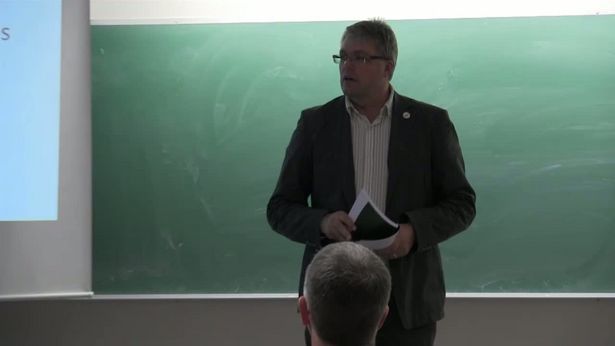
This is a modal window.
Beginning of dialog window. Escape will cancel and close the window.
End of dialog window.
<iframe width="560" height="315" src="https://www.uttv.ee/embed?id=23043" frameborder="0" allowfullscreen></iframe>
Summary:
Modern managed runtime environments and programming languages greatly simplify creation and maintenance of applications. One of the best examples of such managed runtime environments and a language is the Java Virtual Machine and the Java programming language. Despite the built in garbage collector, the memory leak problem is still relevant in Java and means wasting memory by preventing unused objects from being removed. The problem of memory leaks is especially critical for applications, which are expected to work uninterrupted around the clock, as running out of memory is one of a few reasons which may cause the termination of the whole Java application. The best indicator of whether an object is used or not is the time of the last access. However, the main disadvantage of this metric is the incurred performance overhead.
Current thesis researches the memory leak problem and proposes a novel approach for memory leak detection and diagnosis. The thesis proposes an alternative approach for estimation of the 'unusedness' of objects. The main hypothesis is that leaked objects may be identified by applying statistical methods to analyze lifetimes of objects, by observing the ages of the population of objects grouped by their allocation points. Proposed solution is much more efficient performance-wise as for each object it is sufficient to record any information at the time of creation of the object. The research conducted for the thesis is utilized in a memory leak detection tool Plumbr.
After the introduction and overview of the state of the art, current thesis reviews existing solutions and proposes the classification for memory leak detection approaches. Next, the statistical approach for memory leak detection is described along with the description of the main metric used to distinguish leaking objects from non-leaking ones. Follows the analysis of this single metric. Based on this analysis additional metrics are designed and machine learning algorithms are applied on the statistical data acquired from real production environments from the Plumbr tool. Case studies of real applications and one previous solution for the memory leak detection are performed in order to evaluate performance overhead of the tool.
Parema kasutuskogemuse tagamiseks kasutame küpsiseid. UTTV veeb ei töötle ega kogu isikuandmeid. UTTV kasutab Google Analyticsi teenust. Loe lähemalt andmekaitsetingimustest.